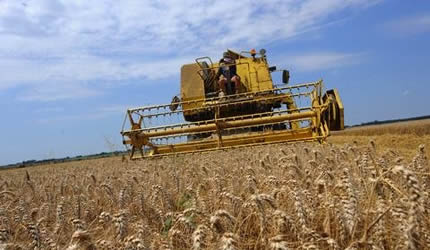Winter wheat hectarage declines

Farmers have planted just 6 000 hectares of winter wheat, compared to 10 700 hectares grown last year
Farmers have planted just 6 000 hectares of winter wheat, compared to 10 700 hectares grown last year an official said yesterday.
Farmers attribute the reduced wheat hectarage to lack of funding.
It costs approximately US$1 200 to grow a hectare of wheat in Zimbabwe against $230 in Ukraine and $600 in Australia.
Agritex agricultural specialist Mr Robson Chihumba told New Ziana that 6 200 hectares were put under wheat as at May 30, 2014.
“Working with last year’s average production, we expect 25 000 tonnes of wheat to be produced this winter,” he said.
Chihumba said the major drawback to winter wheat production is funding.
“Lack of funding is the major reason for the reduction in the size of the area planted. Traditional wheat growers are still planting the crop because there has not been financial support for the capital intensive cereal,” he said.
Winter wheat has been planted in traditional growing areas including Zvimba, Makonde, Chegutu, Bindura, Goromonzi and Shamva.
Government has, however, projected that wheat production will improve by 17, 6 percent from 24 700 tonnes in 2013 to 29 000 tonnes in 2014. Reduced wheat production results in shortages of some basic commodities and related agricultural products in the near future.
Wheat production is estimated to have declined from 33 700 tonnes in 2012, to about 24 700 tonnes in 2013.
This is on account of declines in the area planted from 11 600 hectares in 2012 to around 8 500 in 2013.
Challenges that have continued to affect production of the crop include erratic power supply for irrigation, funding and high costs of inputs.
Zimbabwe requires 400 000 tonnes of wheat annually and shortages mean that the country has to meet the shortfall with costly imports from countries such as South Africa and Zambia. – New Ziana.
